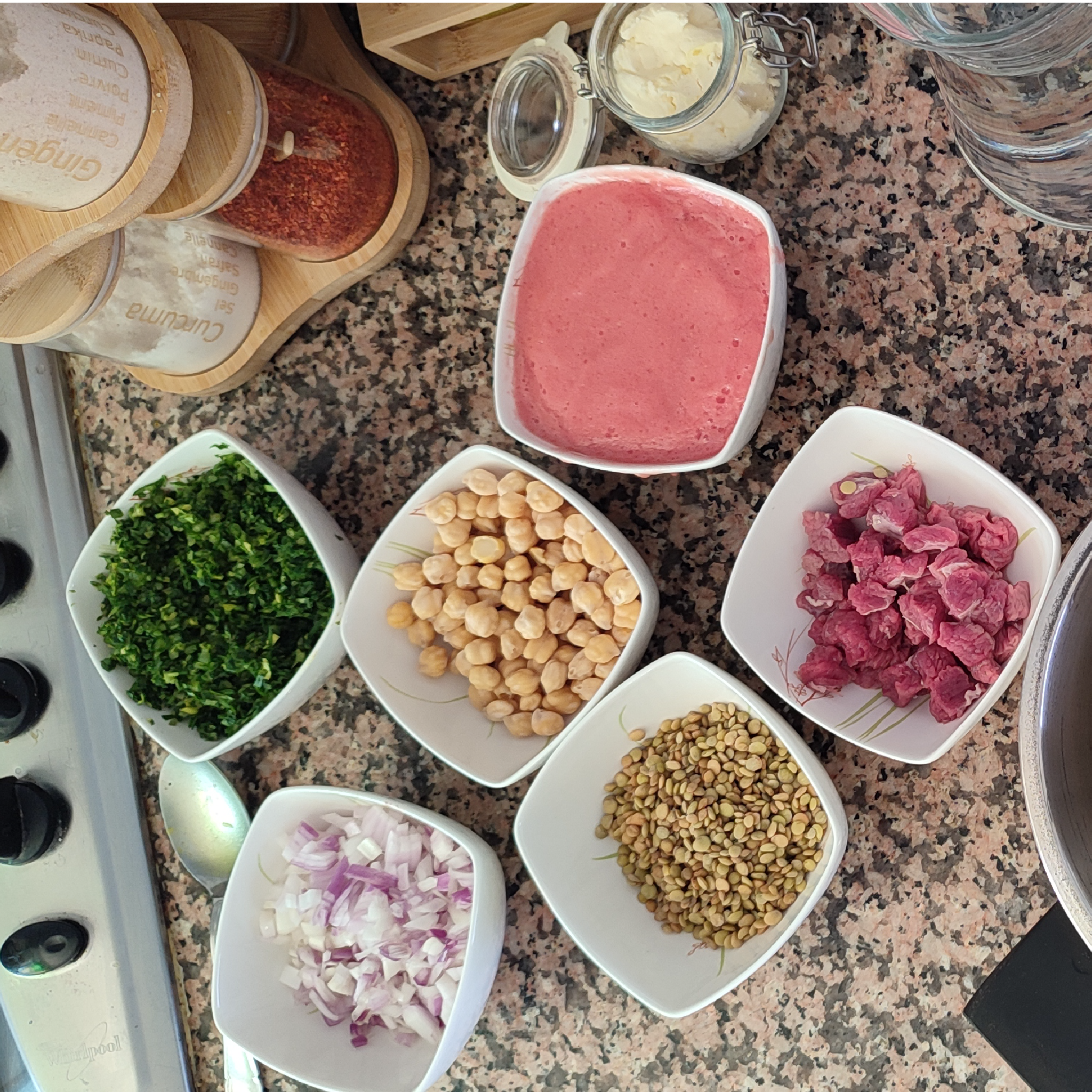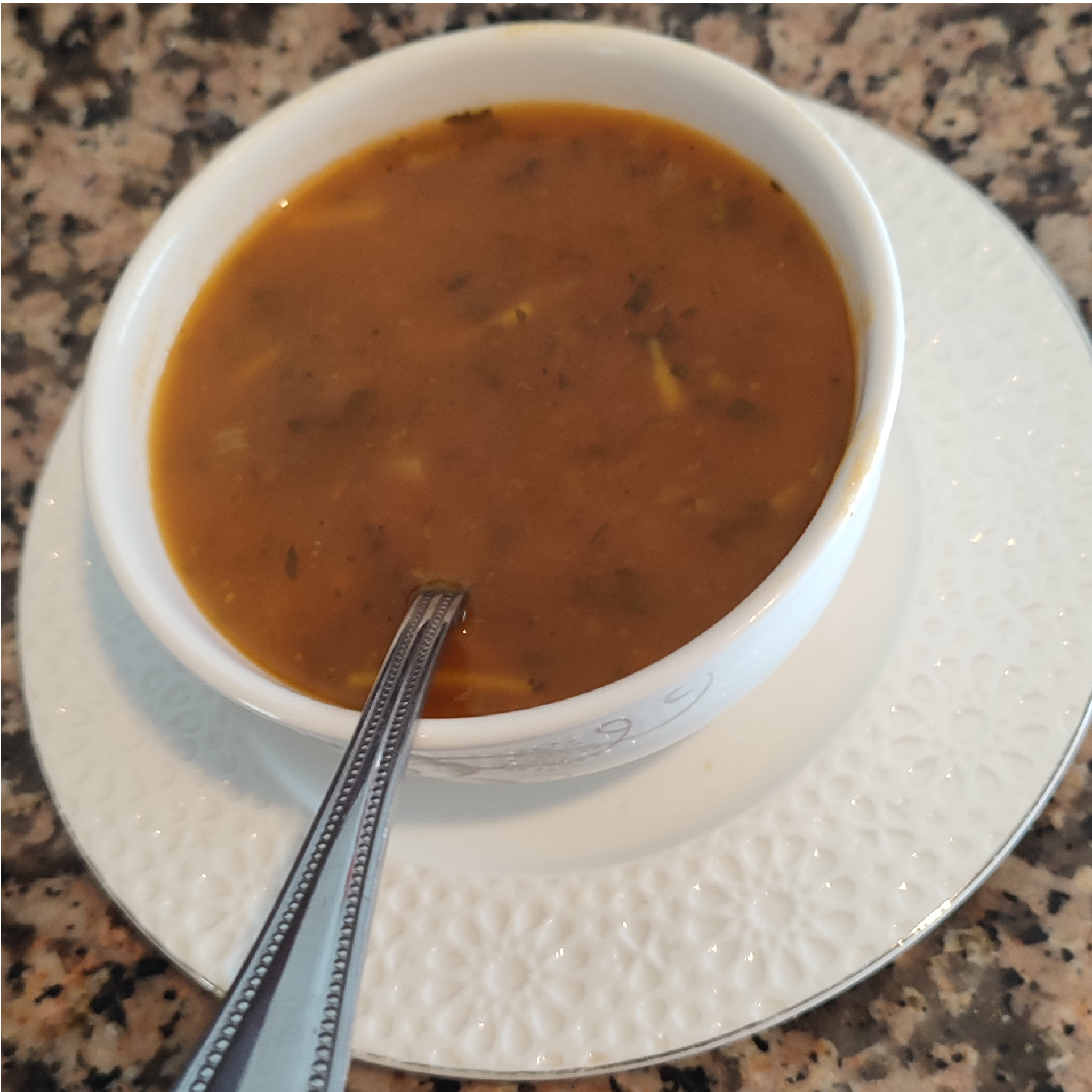Moroccan Harira – A Soup Worth Savoring

A warm, hearty bowl of Moroccan Harira – A Soup that brings comfort and flavor to every spoonful. This traditional dish is a staple in Moroccan cuisine, enjoyed both during Ramadan and as an everyday lunch or dinner. Packed with rich flavors, nutritious ingredients, and aromatic spices, Harira is more than just soup—it’s a cultural experience.
Table of Contents
1. The Cultural Significance of Harira
1.1 Harira and Ramadan
Harira is an essential dish during Ramadan, served to break the fast at Iftar. Its comforting warmth and rich nutrition help restore energy after a long day of fasting. The combination of tomatoes, chickpeas, and lentils provides a perfect balance of proteins and fiber, making it a go-to meal for Moroccan families.
1.2 Beyond Religious Observances
While Harira is a Ramadan staple, it’s also enjoyed throughout the year. Moroccan households prepare it on cold days, at family gatherings, and as a nourishing meal during celebrations. It embodies hospitality, often served to guests with traditional Moroccan pastries like chebakia.
2. Ingredients that Define Harira
2.1 Core Components
Harira is known for its rich blend of ingredients, including:
- Tomatoes – the base that gives Harira its vibrant color and tangy flavor.
- Lentils & Chickpeas – adding protein, fiber, and heartiness.
- Onions, Garlic, and Fresh Herbs – enhancing the flavor with depth and aroma.
2.2 Aromatic Spices
The magic of Harira comes from its carefully selected spices:
- Cumin – earthy and warm.
- Turmeric – adds depth and color.
- Ginger & Cinnamon – bring warmth and complexity.
- Black Pepper & Paprika – for a slight kick of heat.
2.3 Optional Additions
Many families add their personal touch to Harira:
- Meat Variations – lamb, beef, or chicken can be included.
- Thickening Agents – some use flour paste, while others prefer rice or vermicelli.

3. Preparing Authentic Moroccan Harira
3.1 Preparation of Ingredients
- Soak the chickpeas overnight for easier cooking.
- Chop onions, tomatoes, and herbs finely for a smooth texture.
- Prepare the spice blend for an even flavor distribution.
3.2 Cooking Process
- Sauté onions, garlic, and meat (if using) in olive oil.
- Add tomatoes, lentils, chickpeas, and spices.
- Pour in water or broth and simmer for an hour.
- Stir in the thickening agent (flour paste, vermicelli, or rice) towards the end.
- Adjust seasoning and serve hot.
3.3 Common Variations
- Regional Differences: Some regions make Harira thicker, while others prefer a brothier texture.
- Personal Twists: Some cooks add eggs or lemon juice for extra richness and zest.
4. Serving and Enjoying Harira
4.1 Traditional Accompaniments
Harira is often served with:
- Dates – a natural sweet contrast.
- Chebakia – a honey-soaked sesame pastry.
- Lemon Wedges – to enhance the flavors.
4.2 Modern Pairings
For a contemporary twist, try serving Harira with:
- Crusty bread for dipping.
- A fresh side salad for a balanced meal.
- Yogurt or labneh for a creamy contrast.

5. Nutritional Benefits of Harira
5.1 Protein and Fiber Content
The combination of lentils, chickpeas, and flour provides a great source of plant-based protein and fiber, promoting digestive health and keeping you full longer.
5.2 Rich in Vitamins and Minerals
Harira is loaded with vitamins A, C, and iron, thanks to tomatoes, herbs, and spices. These nutrients support immune function and overall well-being.
5.3 A Balanced Meal
With a mix of protein, carbs, and essential nutrients, Harira is a well-rounded dish that fits into a healthy diet, whether you eat meat or follow a vegetarian lifestyle.
6. Frequently Asked Questions about Harira
6.1 Can Harira be made vegetarian or vegan?
Yes! Simply omit the meat and use vegetable broth instead of meat stock for a completely plant-based version.
6.2 How long does Harira last in the refrigerator?
Harira stays fresh for up to 3 days in the fridge. Reheat it on low heat, adding a bit of water if needed.
6.3 Can I freeze Harira for later consumption?
Yes, Harira freezes well. Store it in airtight containers and thaw in the fridge before reheating.
6.4 What are some common mistakes to avoid when making Harira?
- Overcooking lentils until they become mushy.
- Not soaking chickpeas beforehand, leading to longer cooking times.
- Skipping the thickening step, which gives Harira its signature texture.
6.5 How can I adjust the spice level to my preference?
For a milder Harira, reduce black pepper and paprika. For extra heat, add a pinch of cayenne pepper or harissa.
Moroccan Harira – A Soup worth savoring
Whether during Ramadan or as a comforting meal year-round. With its rich flavors, nutritious ingredients, and deep cultural significance, Harira is a must-try dish that brings warmth to any table. Try making it at home and enjoy a taste of Morocco in your own kitchen!
Video Tutorial
For a step-by-step visual guide on making Moroccan Harira, check out this tutorial:
